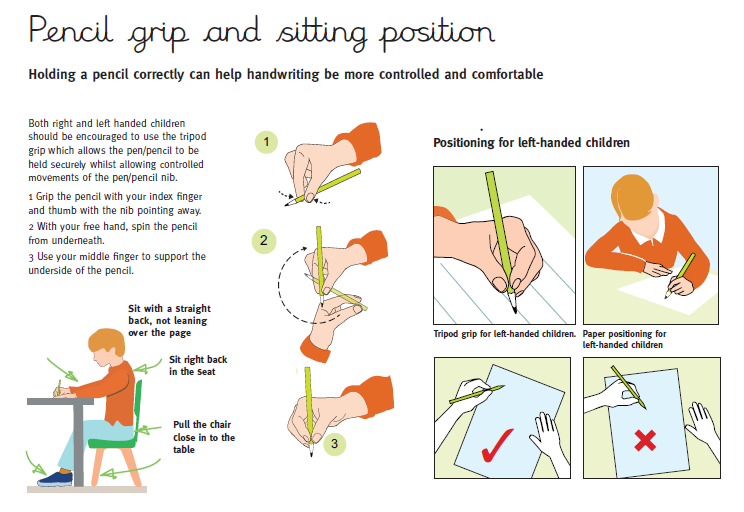Handwriting

Handwriting at Our Lady of the Rosary
At Our Lady of the Rosary, we believe that fluent, legible handwriting enables children to communicate confidently and express their ideas clearly. We teach handwriting systematically from the Early Years, so that pupils develop accuracy, control and enjoyment in written work.
Our Approach to Teaching Handwriting
Handwriting begins in Nursery, where children take part in Write Dance, a movement-based programme designed to strengthen gross-motor and fine-motor control. Through rhythm, movement and mark-making, children develop the coordination, strength and confidence needed for early letter formation.
In Reception, handwriting is introduced through Little Wandle, ensuring letter formation is taught explicitly and consistently. Children learn correct sitting position, pencil grip and how to form letters accurately, building secure habits that support future fluency.
As pupils move through Key Stage 1, they begin to join letters using Letter-Join, developing a fluent, joined style. Frequent, focused practice helps children apply their handwriting confidently across the curriculum.
In Key Stage 2, handwriting teaching continues to refine fluency, legibility and stamina. As children develop speed and consistency, handwriting becomes increasingly automatic, allowing them to focus more fully on the content and organisation of their writing.
Developing Skills Over Time
In Nursery, Write Dance, mark-making activities and sensory experiences help children strengthen their core, hands and fingers. Children build confidence as they begin to control tools and make purposeful marks.
In Reception, children learn to form letters correctly, supported by clear modelling and practice. Attention to posture, pencil grip and letter orientation forms the foundation for neat handwriting.
In Key Stage 1, children begin to join letters. Regular guided practice builds fluency and control so that handwriting can be used confidently in all subjects.
In Key Stage 2, handwriting is refined so that children can write clearly, at pace and at length. Individual support is provided where needed to secure comfort, stamina and legibility.
Practice at Home
Short, regular handwriting practice at home helps children build fluency and confidence. Weekly handwriting homework reinforces classroom learning and promotes a consistent approach. Families are encouraged to support correct posture, pencil grip and formation so that children develop good habits in all settings.
Supporting All Children
Some children benefit from targeted support to help them develop fine-motor skills, fluency or stamina. This may include small-group work, individual guidance or adapted tools to support comfort and control. Our aim is for every child to take pride in their handwriting and feel confident when writing at length.
Continuing the Journey
As children move through Our Lady of the Rosary, fluent handwriting supports learning across the curriculum. Secure, legible writing enables pupils to focus on composition, vocabulary and structure, rather than the physical process of writing. By the time they leave us, pupils are equipped with the skills, confidence and stamina needed for clear written communication in secondary school and beyond.




